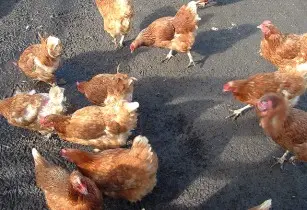Southern African countries, jolted by a debilitating avian influenza outbreak in 2017, have reviewed and updated the regional preparedness and response plan, which is expected to guide the management and control of the disease
The region first experienced the Highly Pathogenic Avian Influenza (HPAI) - commonly referred to as the bird flu - last year, which resulted in huge economic losses and threat to livelihoods and food and nutrition security.
The proposed Plan, which was validated by countries at a meeting in South Africa, gives guidance on regional preparedness, response and control options, as well as coordination mechanisms at regional and national level.
In a speech read on his behalf by Lewis Hove, representative of FAO to South Africa, FAO Subregional Coordinator for Southern Africa, David Phiri said the Plan is a result of a series of meetings held over the course of last year, where the need to update the existing document was underlined.
“Through a collaborative process, the plan has now been updated. I hope that the plan, whose successful implementation will depend on the capacity and sincere participation of all stakeholders, will support the SADC Secretariat and Member States’ efforts in controlling Highly Pathogenic Avian Influenza (HPAI) H5N8,” said David Phiri, FAO subregional coordinator for Southern Africa.
Bird flu outbreaks have far-reaching impacts on commercial poultry production in Southern Africa, as the sector has grown significantly in recent years, employing hundreds of thousands of people. In the SADC Region, Avian Influenza has so far hit the Democratic Republic of the Congo, South Africa and Zimbabwe. The disease was mainly identified on large commercial farms, where systems to monitor outbreaks are more readily in place compared to smallholder and backyard producers.
The poultry sector is crucial in the region because poultry meat and eggs provide affordable sources of high-quality animal protein, and therefore contributes to the food and nutrition security needs of millions of people in the region. Poultry production also provides a vital source of income and a safety net for hundreds of thousands of people, particularly rural women and youth.
“As such, we will continue to work closely with governments, regional and international partners, private sector players to create awareness on emerging disease threats and to provide support to countries, as part of our overall efforts to end world hunger and to ensure food security for all,” added Phiri.
The region’s preparedness to control transboundary animal and plant pests and diseases continues at the front burner as Southern Africa witnesses the emergence and re-emergence of these threats. One most recent threat is the emergence of listeriosis in South Africa, which has huge potential to dampen regional trade and food and nutrition security. Listeria bacteria cause the disease that has recently spread through storage and consumption of processed cold meats.








